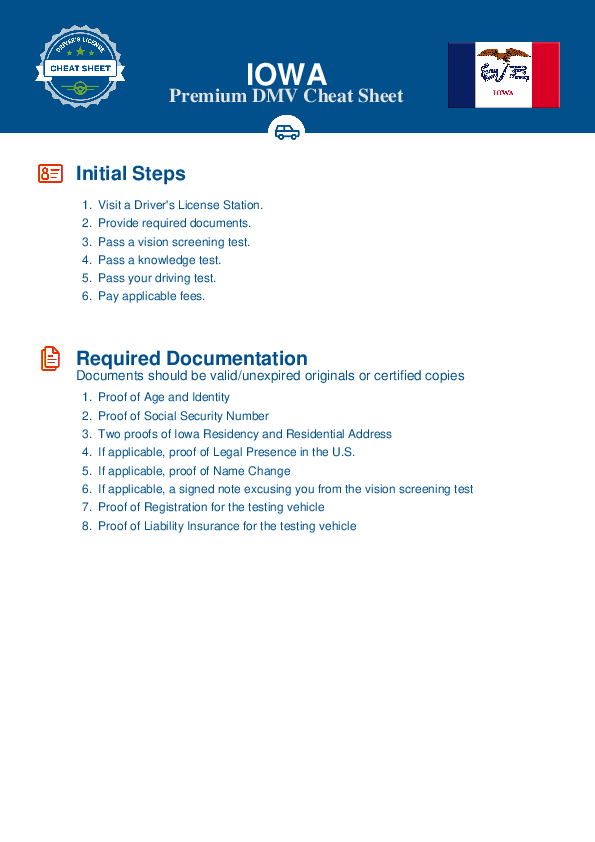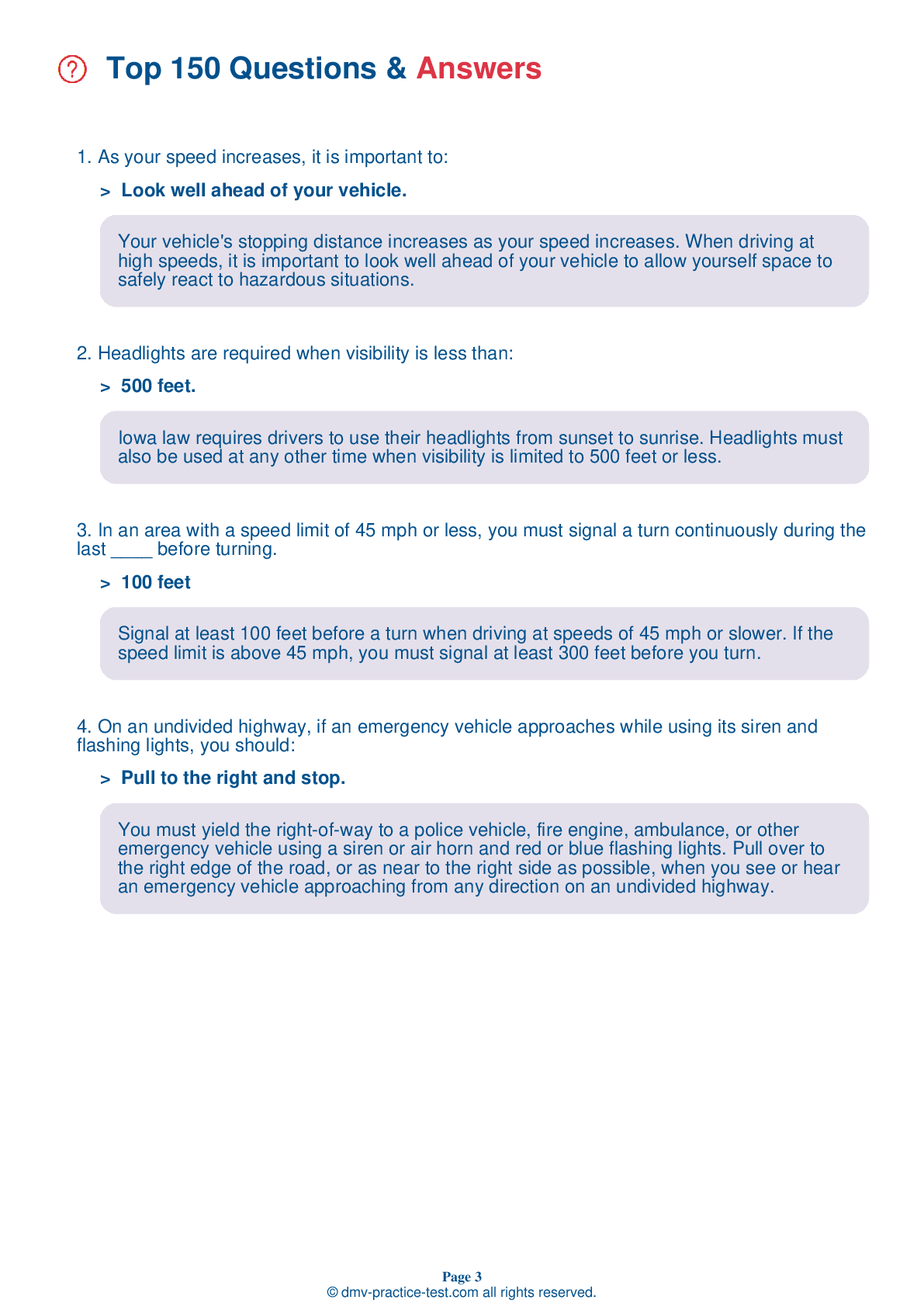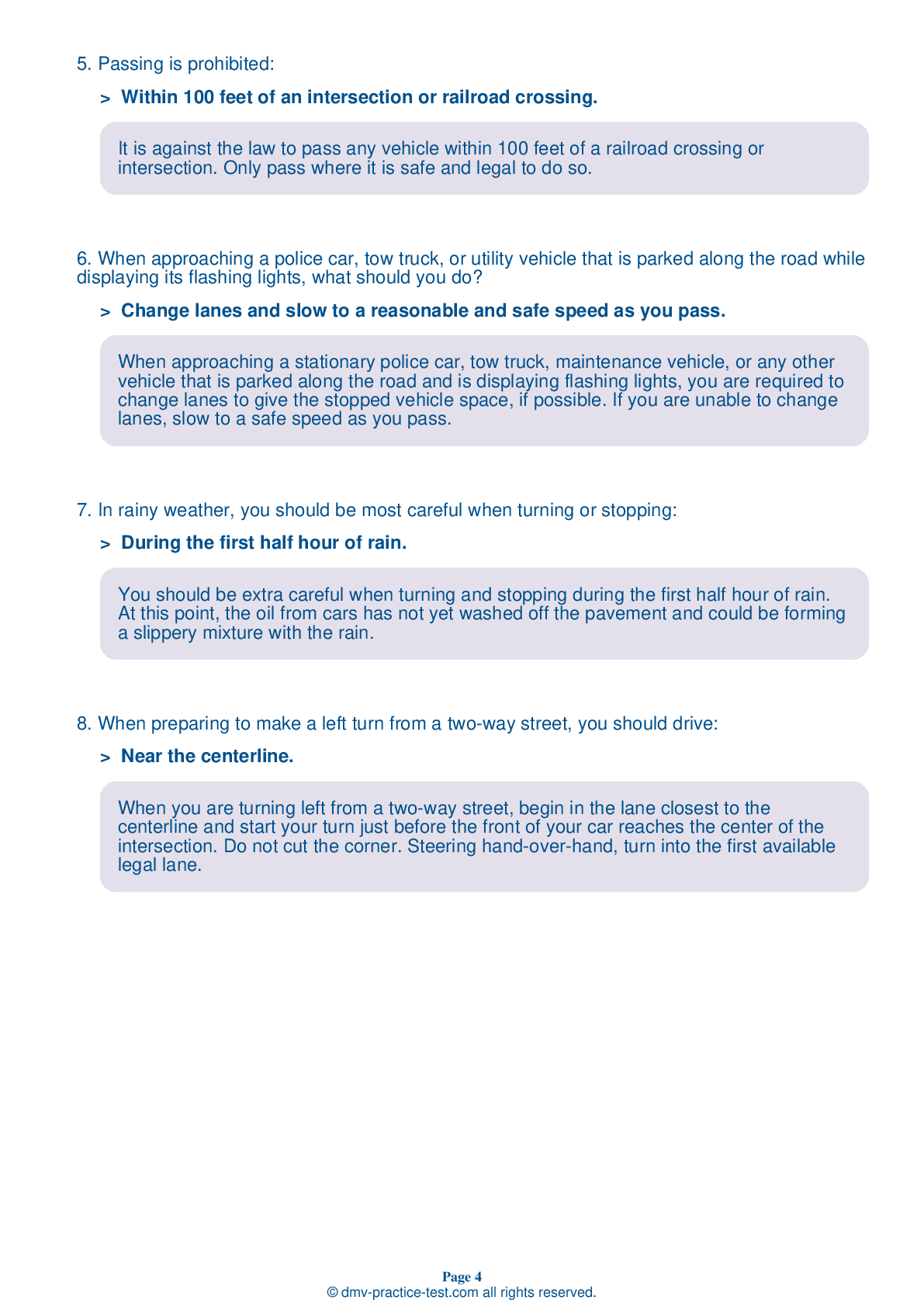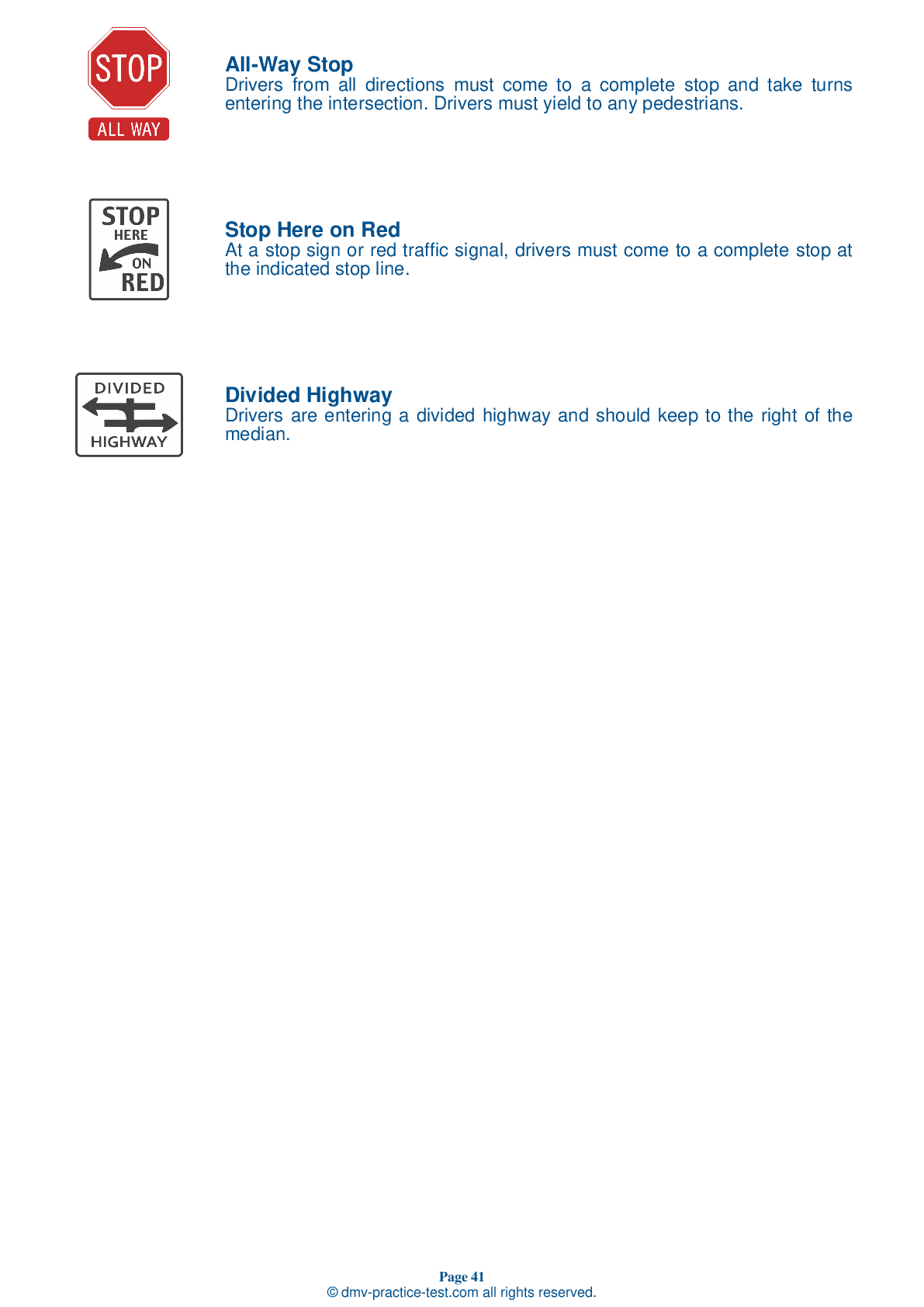FREE Iowa DMV Practice Test #9 Page 3 of 5
The DMV practise tests in Iowa have been updated for January 2025. It comprises questions based on the most important traffic signals and legislation for 2025 from the Iowa Driver Handbook. To study for the DMV driving permit test and driver's licence exam, use actual questions that are very similar (often identical!) to the DMV driving permit test and driver's licence exam.
Each question on the practise exam has a tip and explanation to help you recall the ideas. Questions about traffic rules, traffic signs, and driving statutes, as well as information from the Driver Handbook, will be included in the written portion of the official Iowa DMV test.
You must properly answer 28 of the 35 questions to receive a passing mark. To help you prepare for your Iowa instruction permit or driver's licence, take our DMV practise test.
The DMV exam is offered in a variety of languages.
Using any form of testing help will result in an automatic fail, and the DMV may take further action against your driver's licence, so avoid it.
17 . If a transit vehicle is signaling to re-enter the main roadway following a stop, you must:
You must yield to any transit vehicle that is signaling to pull back onto the main roadway after it has stopped to load or unload passengers. Change lanes, slow down, or stop to allow the bus safe re-entry into traffic.
18 . This sign means:
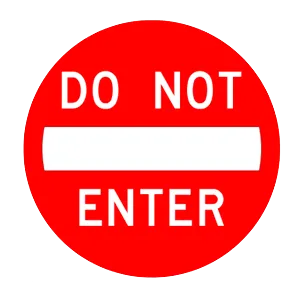
This sign means that it is not safe for drivers to enter the indicated road or driveway from their current direction. If you come across one of these signs, you should immediately turn around and drive a different way.
19 . When driving near a blind pedestrian who is carrying a white cane or using a guide dog, you should:
When driving near a blind pedestrian who is carrying a white cane or walking with a guide dog, you must slow down, yield the right-of-way, and then proceed with caution. Be prepared to stop your vehicle in order to prevent injury or danger to the pedestrian.
20 . If a tire blows out, you should:
If a tire suddenly blows out while you are driving, hold the steering wheel tightly and keep the vehicle going straight.You should slow down gradually, taking your foot off the gas pedal and using the brakes lightly. Do not stop on the road if at all possible. Pull off the road in a safe place.
21 . When passing another vehicle, it is safe to return to your lane if you:
Before returning to your original lane after passing, you must make sure you are not dangerously close to the vehicle you have just passed. When you can see both of the vehicle's headlights in your rearview mirror, you may have enough room to return to the lane.
22 . This sign shows one type of:
.png)
